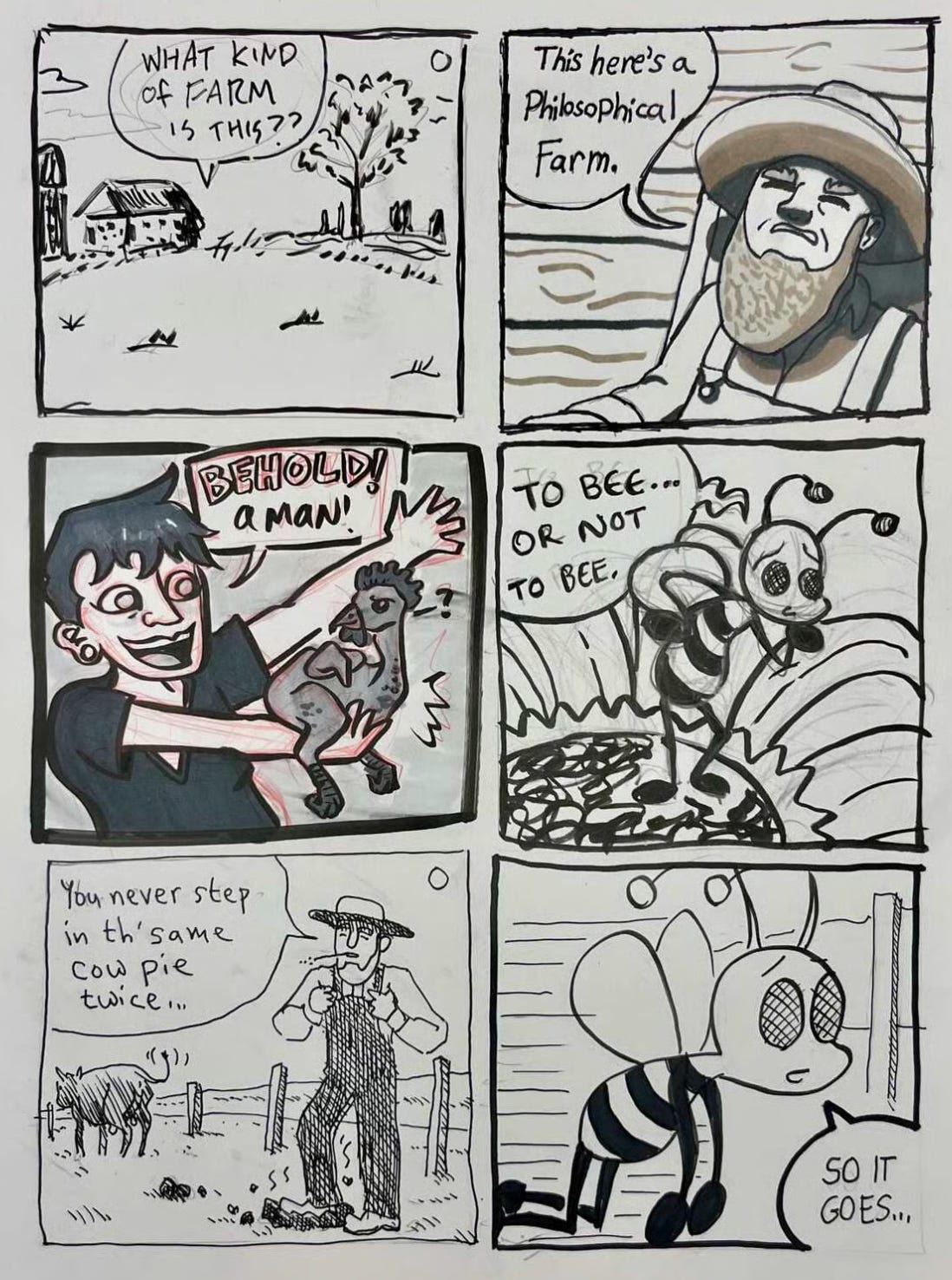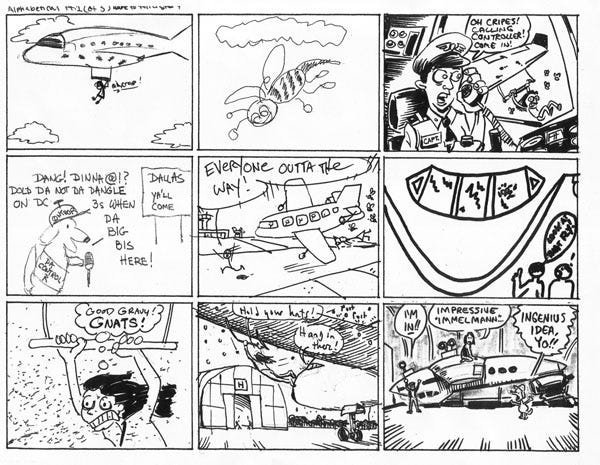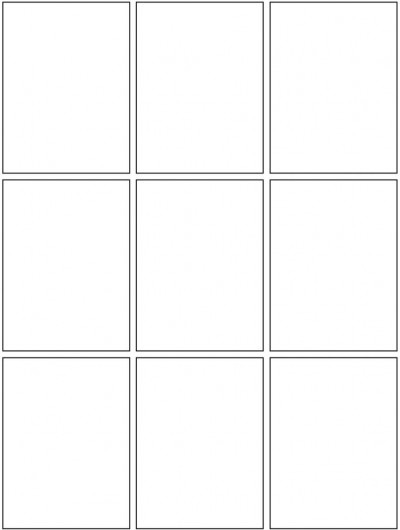Rules for Jam Comics
You can use constraints to add structure and fun to collaborative comics
A comics jam with a twist
I occasionally go to a local comics meet-up called the Philly Comix Jam that’s been going for quite a while now (and if you’re reading this locally, it’s open to all comers). It’s a great way to meet fellow cartoonists, both experienced and green, and to hang out and draw a bit in a very relaxed environment—usually a bar or a café.
My early comics life was deeply marked by the time I spent hanging out in cafés and bars in Hamtramck, Michigan in the early 90s and later in Austin, Texas, chatting about art supplies and artistic ambitions while drawing mostly very silly comics together.
A jam comic is an improvised collaborative comic wherein one person draws a single panel and then passes it on to the next person, whose job it is to draw a new panel that continues the story. It’s a distant cousin of the Surrealists’ exquisite corpse game and has been part of comics culture since R. Crumb and his pals started featuring jams on the inside front covers of Zap Comix.

Jam comics are often more fun to create than to read since they tend to become a little chaotic. However, one way to create more interesting comics is to assign yourselves a rule that will give all the participants a common guiding principle or constraint. For example, you could make a jam comic where every panel has to include a circle, a triangle, and a square.
When you have a rule to focus on you need to concentrate on how you can draw something interesting that will follow the constraint and give some kind of structure to the whole page instead of drawing something random, something gross (a common response and totally fine and enjoyable in its own way), or trying to introduce a set-up that nobody picks up on.

Try it with your local cartoonists
If you already have a group of cartoonist friends, this is a really easy activity to initiate. It’s also a great classroom activity, whether as a warm-up or as a reward for a successful semester of cartooning (or studying comics—no drawing experience required).
Materials
• office paper (or bristol board) laid out with a six- or nine-panel grid (one per participant). You can download a pdf of the nine-panel grid here, or you can make your own.
• pencils and pens, erasers, and any other art supplies you like
Instructions
Every participant gets a sheet of paper with a panel grid on it. Before you start drawing, choose a rule for you jam comic to follow and write that rule (along with an explanation if necessary) at the top or on the back of the page.
Here are a few suggestions for tried-and-true constraints you can use (this list is based on one put together by cartoonist Tom Motley), but feel free to come up with your own rules:
1. Backward. Start with the last panel. In each previous panel, show what happened before.
2. Pay it forward. The first contributor draws a panel, leaving space at the top for a caption, and adds a caption to the second panel. The next contributor illustrates the captioned second panel, and adds a caption for the third panel, and so on. (The last contributor must add a caption for the first panel.)
3. Carryovers. Each new panel must contain an image from the previous panel.
4. Zoom out (or in). Each panel should zoom out (or in) from the previous panel.
5. Monosyllables. Write using only one-syllable words.
6. Monotext. Use only one word in every panel.
7. Monotext/Monosyllable. Every panel must include only a single one-syllable word.
8. Imageless. You can use words, sound effects, etc., but no representational images.
Once you have chosen a rule and written it down on the page, draw your first panel. Don’t worry about making polished, perfect drawings, just sketch your ideas in and have fun with them.
Work in pencil or pen, whichever you prefer, keeping in mind that the final comic will look better if everyone uses the same thing. Every time you finish a panel, find someone to trade with (try not to draw on the same comic more than once). Keep the jam moving along at a steady clip.
At the end of the jam, your group will have a pile of one-page comics which you can share and laugh over. Some people collect their jams into minicomics or share them online, as the Philly Comix Jam organizers do.


